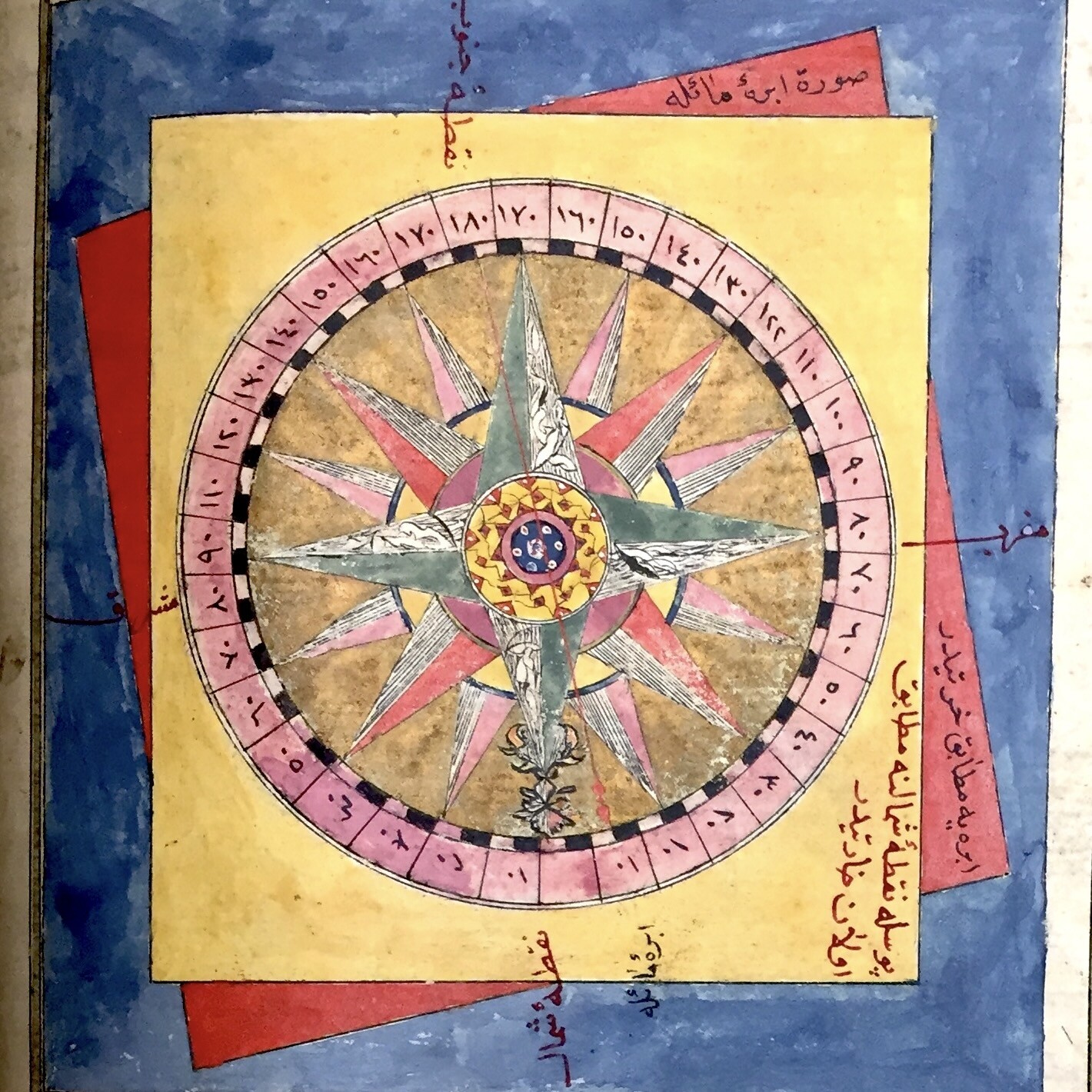MAʿRİFETNĀME: Turkish MSS Suppl. 184
معرفتنامه
ابراهیم حقی افندی ارضرومی
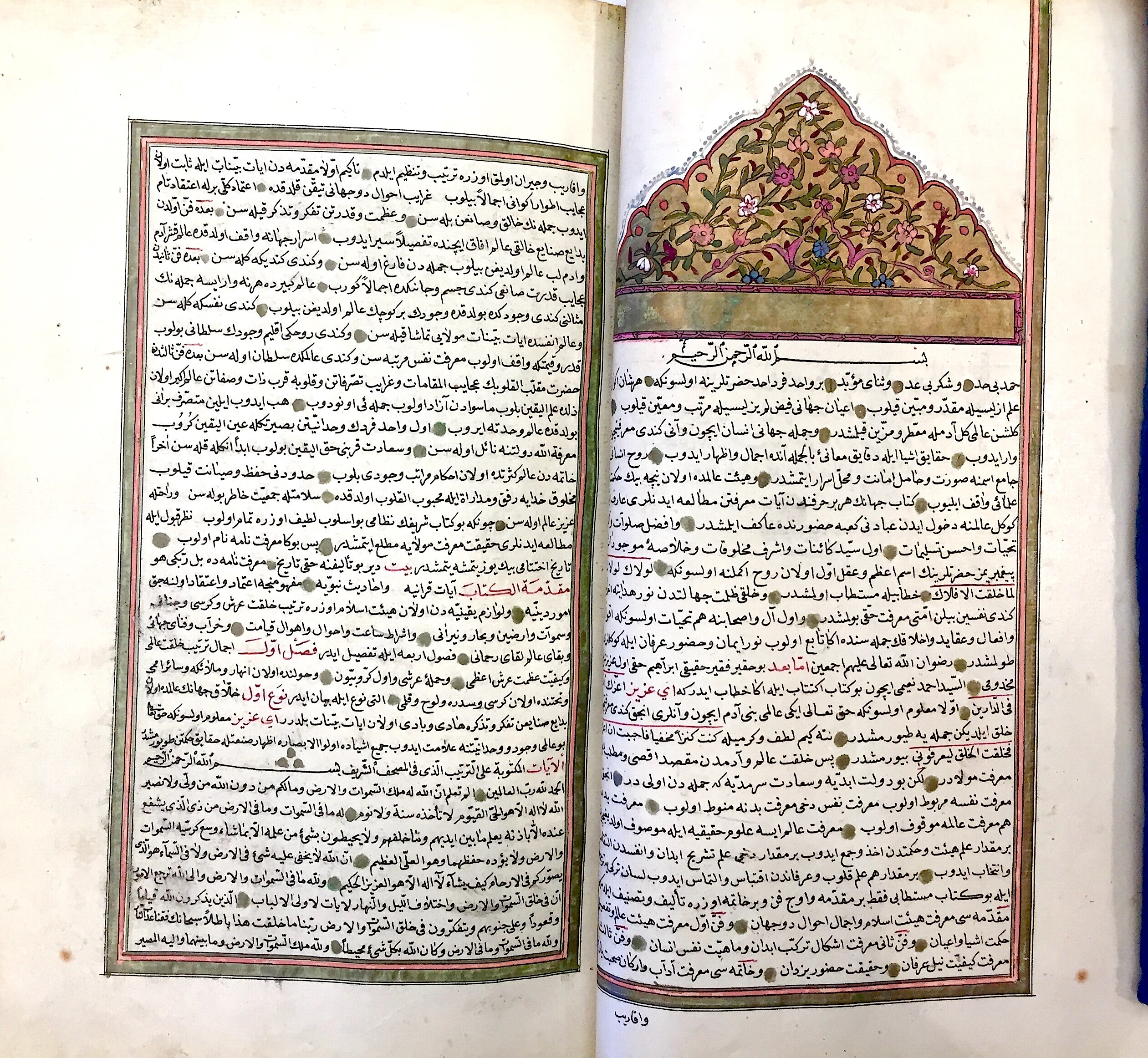
Beinecke Library, Turkish MSS Suppl. 184, ff. 1r–[0]v. The first page of the Maʿrifetnāme with its illuminated headpiece.
Turkish MSS Suppl. 184 is a fine eighteenth-century manuscript copy of the Maʿrifetnāme, (“The Book of Gnosis”), one of the most well-known and widely read texts in Ottoman Anatolia. Penned by İbrāhīm Ḥaḳḳī Efendi of Erzurum (d. AH 1194/1780 CE), an eighteenth-century Ottoman scholar and Sufi poet, the Maʿrifetnāme is a scholarly encyclopedia that covers a wide range of areas, including astronomy, astrology, anatomy, physiology, psychology, physics, mathematics, biology, geometry, physiognomy, faith, mysticism, education, social, moral and traditional sciences. In the preface, the author states that he completed the Maʿrifetnāme in HA 1170/1757 CE. He also dedicates it to his son Seyyid Aḥmed Naʿīmī.
The Beinecke’s copy of the Maʿrifetnāme, Turkish MSS Suppl. 184, is yet uncatalogued. It is a gift of Thomas E. Marston (Yale 1927), the curator of medieval and Renaissance literature at the Yale University Library, in honor of Alexander O. Vietor (Yale 1936), the curator of maps at the Yale University Library. A note attached to the manuscript shows that it was once priced for sale for $225 dollars.
The Beinecke’s Maʿrifetnāme was copied in HA 1204/1789–90 CE by Seyyid ʿAbdī [bin Feyżu’llāh] as noted in the colophon. It is 382 leaves (plus 3 fly-leaves) written in black Naskh script within gold-ruled borders. It measures 32 cm by 19.5 cm, and it has thirty-five lines to the page.
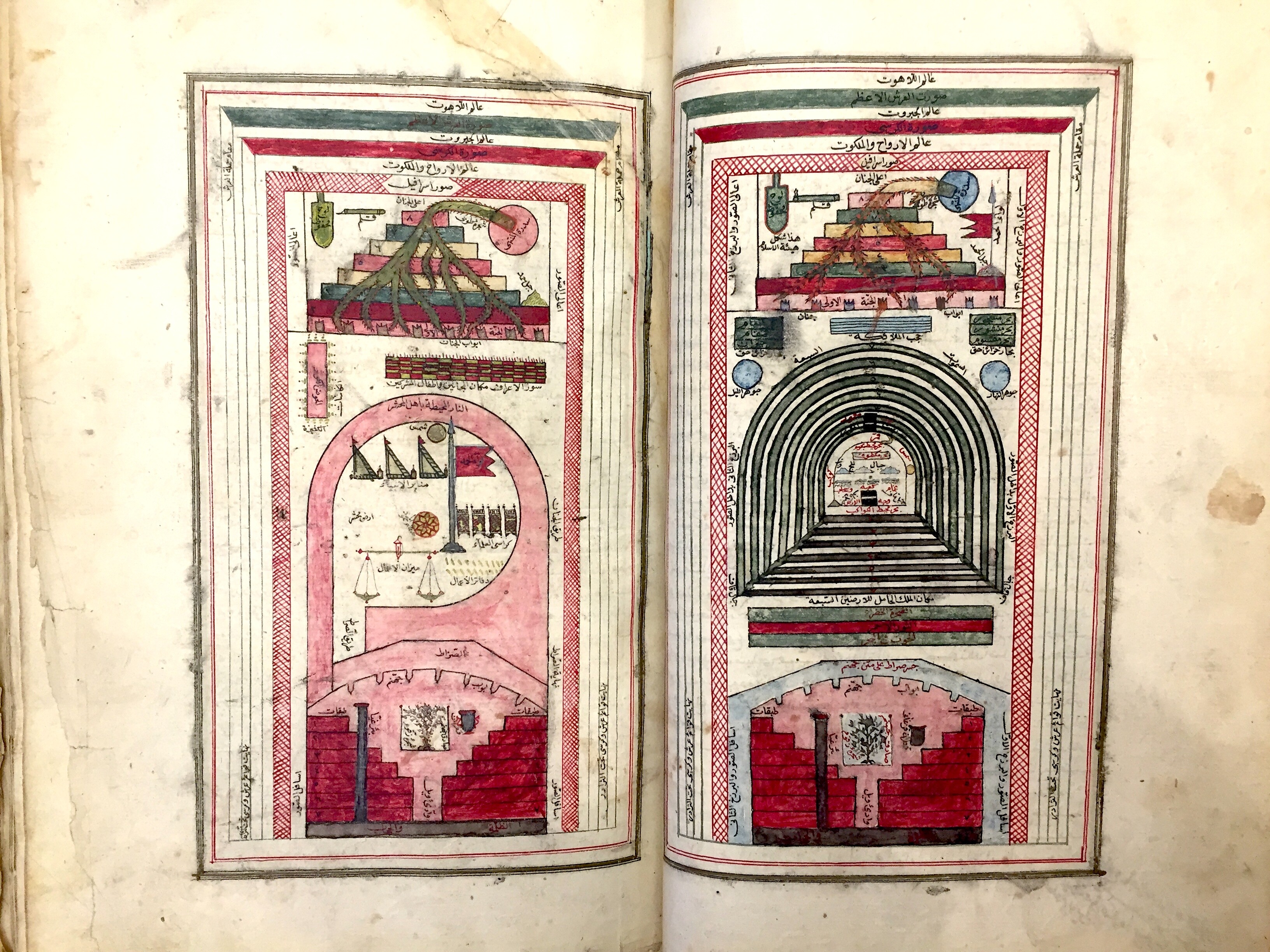
Beinecke Library, Turkish MSS Suppl. 184, ff. 5v–6r. Drawings of the Ka‘bah; eschatological concepts of the Judgment Day; the Scale (Mīzān) where people and their actions will be evaluated; layers of hell and heavens; the Preserved Tablet (Levḥ-i maḥfūz); the Lot-tree at the farthest end of the seven heaven (Sidretü’l-müntehā); the Bridge over Hell (Ṣırāṭ); the Book of Deeds (Defātirü’l-aʿmāl), etc.
Its opening page is adorned with gold and polychrome decoration along with finely illuminated folios with colored diagrams, maps, and astronomical tables. Following a fihrist (a table of contents) (ff. 1v–14r) by Seyyid ʿAbdī bin Feyżu’llāh (f. 14r), the text consists of a preface (ff. 9v–13r) which touches upon the Islamic understanding of the creation of the world and the Day of Judgment, three major chapters (Fenn-i evvel, ff. 13r-89v; Fenn-i s̱ānī, ff. 89v-157r; Fenn-i s̱ālis̱, ff. 157r–382r), and an afterword (f. 381v). The manuscript ends with the author’s letter to the Sufis (ff. 381v–382r). Each chapter is divided into subsections with various subtitles, such as bāb (chapter), faṣıl (chapter), and nevʿ (kind).
In the beginning of each major chapter, the author summarizes the content of the new chapter. Fenn-i evvel details topics such as evolution, geometry, geography, astrology, astronomy, and calendar. It is enriched with colored maps, diagrams, and charts. Fenn-i s̱ānī discusses the sciences, including anatomy, physiology, psychology, and physiognomy. Fenn-i s̱ālis̱ is dedicated to religious and mystical topics.
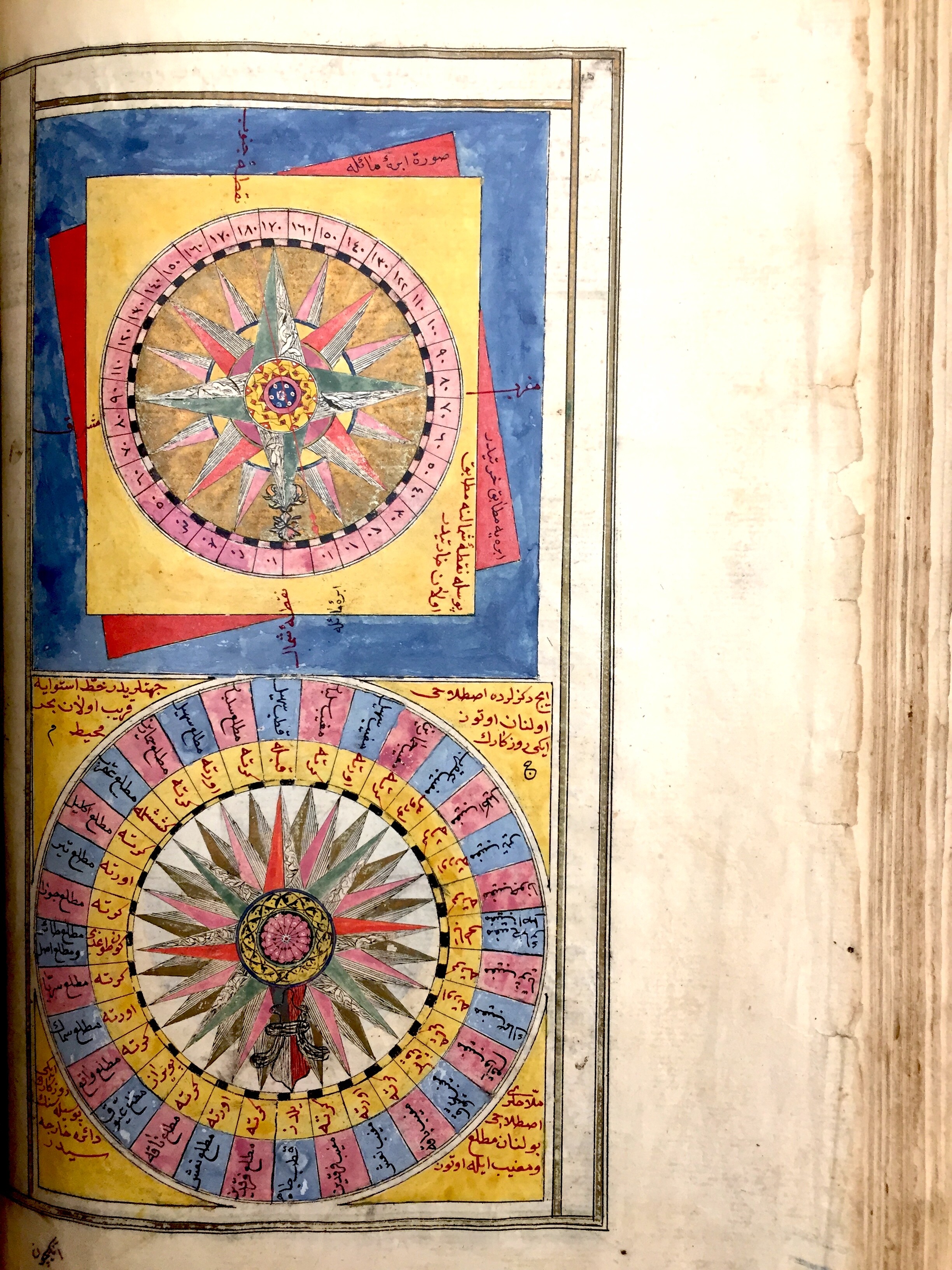
Beinecke Library, Turkish MSS Suppl. 184, f. 64v. A compass depicting directions and mapping various winds.
The Maʿrifetnāme reflects the author’s close familiarity with some of the well-known earlier Islamic texts. Of them, two particular Ottoman cosmography and geography texts with maps and illustrations can be mentioned here: The Cihānnümā (“Mirror of the World”) of Kātib Çelebi (d. AH 1068/1657 CE), the foremost Ottoman intellectual who penned many works on geography, history, and biography; and the Tārīḫ-i Hind-i Ġarbī (“A History of the India of the West”) attributed to Meḥmed Suʿūdī Efendi (d. AH 999/1591 CE), a sixteenth century Ottoman scholar and author.
Ȃmil Çelebioğlu has located thirty-six copies of the text. In his Erzurumlu İbrahim Hakkı, he lists thirty-five copies in libraries and private collections in Turkey and one copy in the British Library. Additional to Çelebioğlu’s accounted copies, there are few other copies outside of Turkey. Turkish MSS Suppl. 184 is one of the four (known) copies of the Maʿrifetnāme in American institutions. The other three copies are the Special Collections Research Center of the University of Michigan, Isl. Ms. 826 (AH 1220/1806 CE); New York Public Library, Spencer Coll. Turk Ms. 12 (AH 1245/1829–30 CE), and New York Public Library, Spencer Coll. Turk Ms. 14 (AH 1251/1835 CE). There are other (known) copies in Europe: British Library, London, Or. 12964 (AH 1235/1818 CE); Gazi Husrev-Beg Library in Sarajevo, nr. 105 (AH 1174/1761 CE?); The Utrecht University Library, Hs. 16 B 18 (AH 1241/1826 CE).
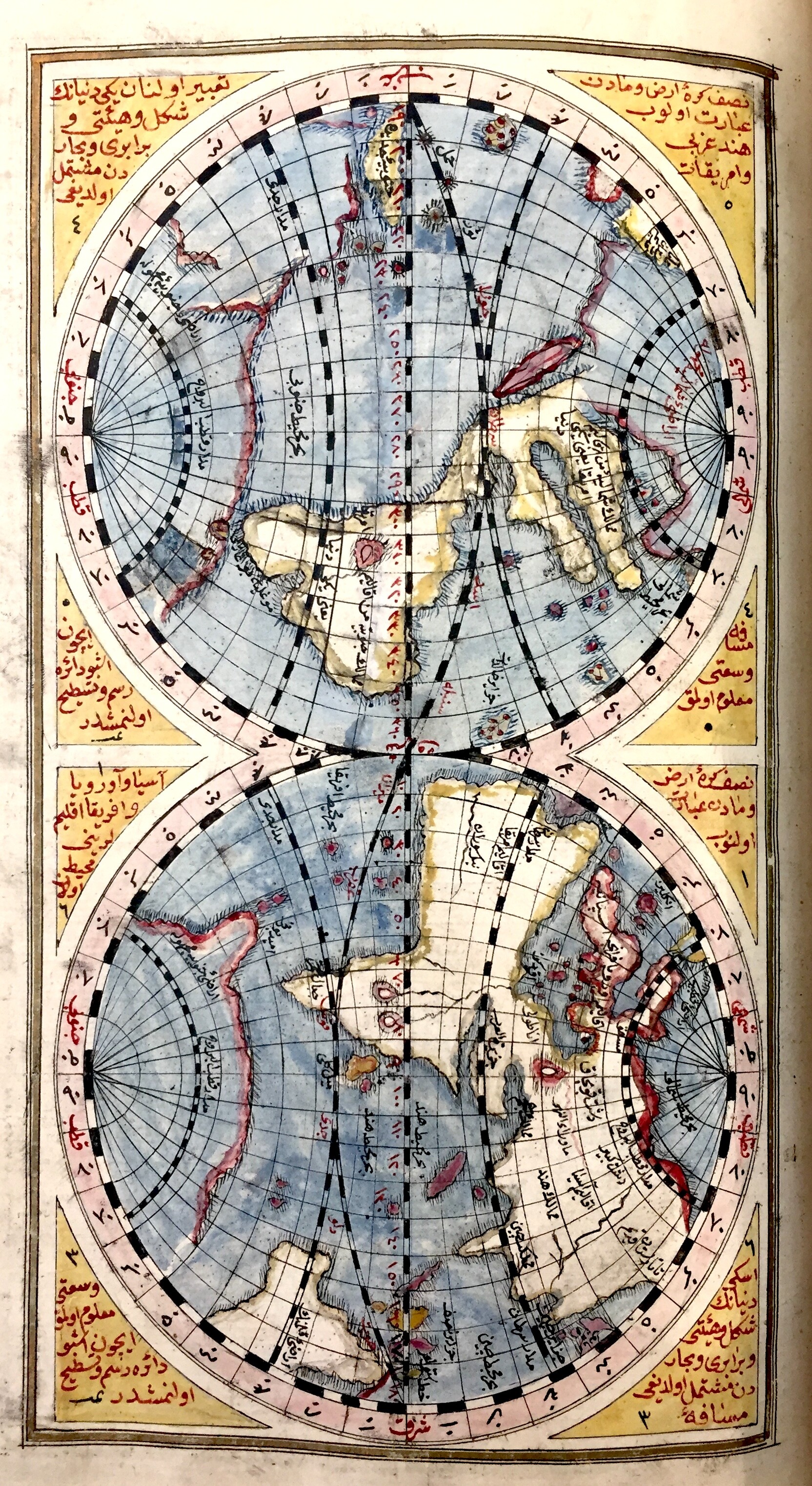
Beinecke Library, Turkish MSS Suppl. 184, f. 80r. World maps illustrating “Hind-i ġarbī” (The India of the West) and the continents (Asia, Europe, Africa, and the Americas).
While many copies of the Maʿrifetnāme in today’s various collections are from the nineteenth century, the Beinecke’s copy Turkish MSS Suppl. 184, produced about 10 years after İbrāhīm Ḥaḳḳī’s death, stands out as one of the few copies from the eighteenth century.
Following its first publication in AH 1251/1835 CE in Bulaq, the text was republished numerous times. Although there are numerous academic works on the Maʿrifetnāme in Turkish, the text has been briefly mentioned in a few English articles and books, some of which are listed below.
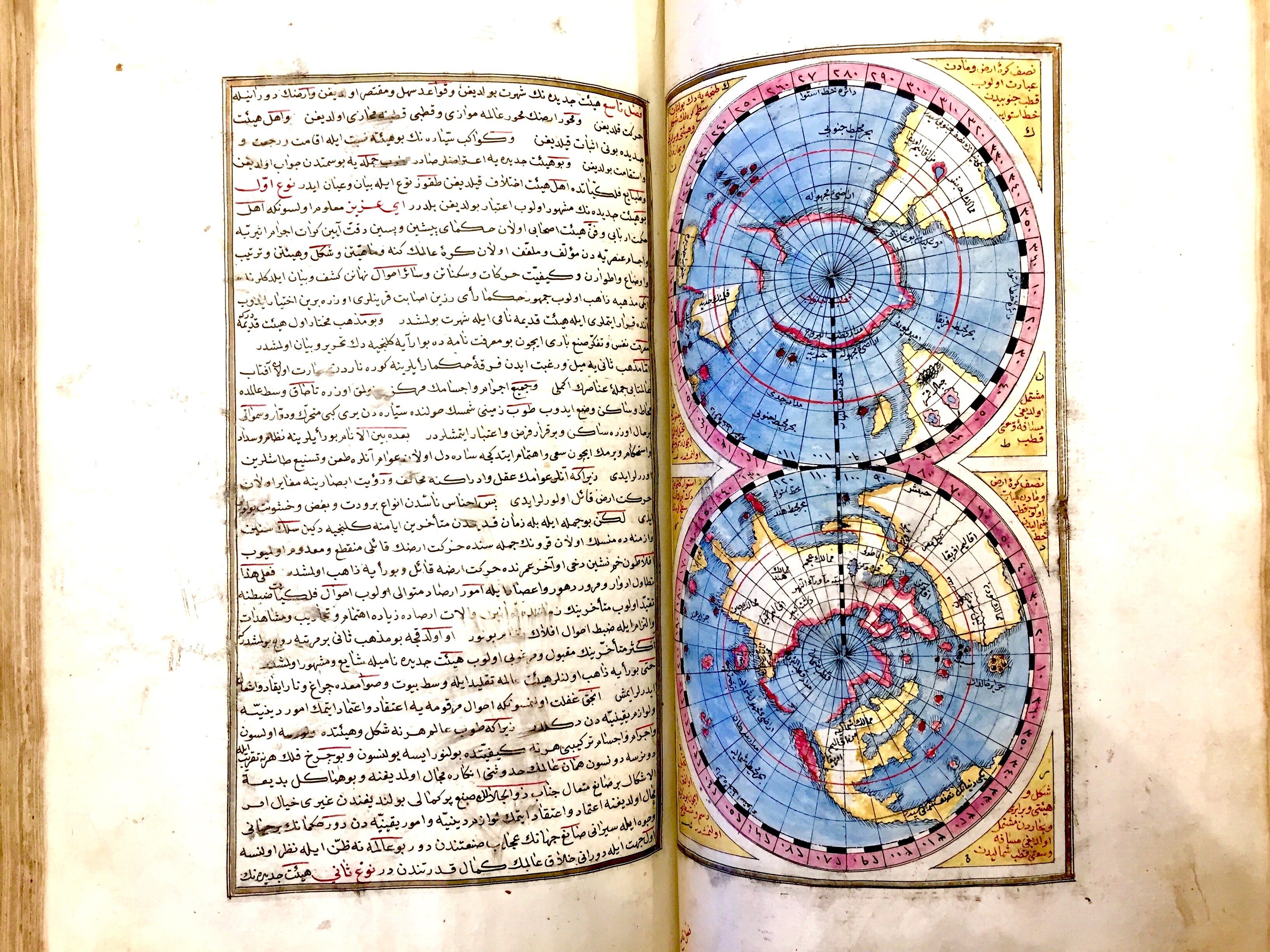
Beinecke Library, Turkish MSS Suppl. 184, f. 80v. World maps with the north and south hemispheres depicted on the right page.
Ozgen Felek
December 17, 2021
Selected Bibliography
ÇELEBİOĞLU, Âmil. Erzurumlu İbrahim Hakkı. Ankara: Kültür Bakanlığı Yayınları, 1988.
ḌIYĀ‘Ī, ʿAlī Akbar. Islamic Cosmology and Astronomy: Ibrahim Hakkı’s Marifetname. Saarbrücken: LAP, Lambert Academic Pub, 2010.
İHSANOĞLU, Ekmeleddin. “The Introduction of Western Science to the Ottoman World: A Case Study of Modern Astronomy (1660–1860),” in Transfer of Modern Science and Technology to the Muslim World, edited by Ekmeleddin İhsanoğlu. (Istanbul: IRCICA, 1992), 67-120.
GOODRICH, Thomas D. The Ottoman Turks and the New World: A Study of Tarih-i Hind-i Garbi and Sixteenth Century Ottoman Americana. Wiesbaden: Otto Harrassowitz, 1990.
GRUBER, Christiane. “Signs of the Hour: Eschatological Imagery in Islamic Book Arts,” in Ars Orientalis 44 (2014): 40–6.
KARAMUSTAFA, Ahmet. “Cosmographical Diagrams,” in Cartography in the Traditional Islamic and South Asian Societies, ed. John Harley and David Woodward, History of Cartography, vol. 2 (Chicago: University of Chicago Press, 1992), 71-89.
Kātib Çelebi. An Ottoman Cosmography: Translation of Cihānnümā, ed. by Gottfried Hagen and Robert Dankoff, trans. by Ferenc Csirkés, John Curry, and Gary Leiser. Leiden-Boston: Brill, 2021.
WALEY, Muhammad Isa. “Illumination and Its Function in Islamic Manuscripts,” in Scribes et manuscrits du Moyen-Orient, ed. François Déroche and Francis Richard. Paris: Bibliothèque nationale de France, 1997.
Links to some of the referenced manuscripts
Ann Arbor, University of Michigan, Special Collections Research Center, Isl. Ms. 826.
New York Public Library, Spencer Coll. Turk Ms. 12 (AH 1245/1829–30 CE).
View the author’s bio.
Return to the Hidden Gems homepage.
